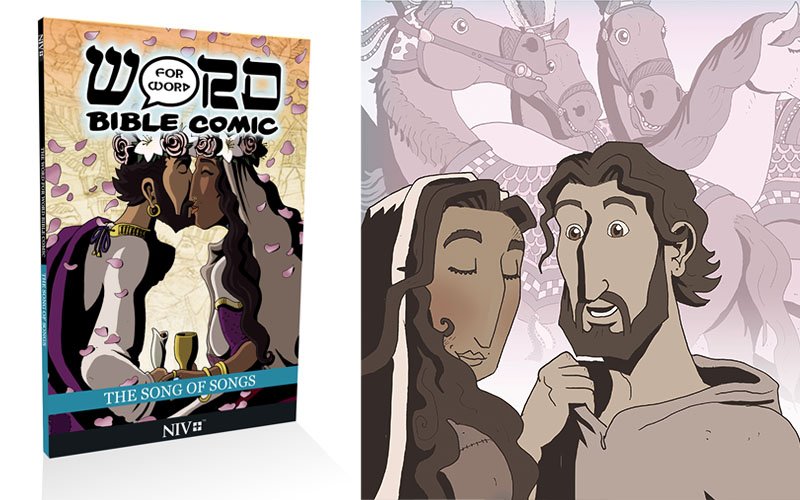Is Song of Songs an allegory?
The facts that Song of Songs is part of the canon of Scripture and that its name means "the greatest of all songs" implies to many that there is more to the book than a poem between lovers and that it has a greater or prophetic significance, with symbols pointing to a more profound spiritual truth.
YHWH and the nation of Israel
In some Jewish traditions, the song (Shir Hashirim in Hebrew) is thought to represent God's love for Israel. Indeed, God is repeatedly pictured as being married to the nation of Israel (Jer. 2:1, Ezek. 16:8, Hosea 1-3, Is. 54:6, etc.) and Israel is called His beloved (Jer 11:15; 12:7). These traditions understand the love between the wife and husband in Song of Songs as a metaphor for God's love for his people.
The book is traditionally read with a blessing on the first night of Passover at the end of the Seder meal. Some rabbis see the “song of Solomon” itself as a midrash written by Solomon about the Exodus. (Vanessa Lovelace defines midrash as "a Jewish mode of interpretation that not only engages the words of the text, behind the text, and beyond the text, but also focuses on each letter, and the words left unsaid by each line.”) These rabbis see parallels between YHWH coming to take the maiden/Israel out of her life of toil in the sun (1:6), her being initially rejected (2:17) but then reconciled and betrothed, being brought out of the land of toil and into a covenant relationship (marriage/the Law), and then, ultimately, running off to the countryside/promised land together with her husband/God (6:11 and 8:14). Even beyond this, these rabbis examine every word in parallel with the Exodus story looking for connections and hints of deeper meanings.
At the Council of Jamnia in the late first century, Rabbi Akiva, speaking against the potential exclusion of Song of Songs from the Hebrew canon exclaimed, "Heaven forbid! [...] For all of eternity is not as worthy as the day on which the Song of Songs was given to Israel, for all the Writings are holy, but the Song of Songs is the Holy of Holies."
Christ and the Church
While some Christian commentaries strain to make every word of this sensuous book fit an allegory of Christ and his bride to an unnecessary degree, there are some very compelling parallels when the book is considered in broad strokes.
If it was written by Solomon (or his contemporaries) as an allegory about the future coming of the Messiah, this was not conceived as a metaphor but done prophetically through the working of the Holy Spirit. In this interpretation, following the two-person narrative, Christ is the king and the maiden is "the bride of Christ,” that is, the church (Ephesians 5:25–32, Rev. 19:6-9).
The king (Revelation 17:14) comes (the first time) to visit his beloved in a humble guise (Isaiah 53:2) as a shepherd (John 10:11-18). She falls in love with the humble shepherd and the two are engaged (Song 3:4) and so he becomes the bridegroom (Matt. 25:1–13, John 3:29). As Jewish customs dictate, the groom then goes away to make a home for her (John 14:3). Later the wedding party returns with a company of friends (Matt 25:31) and she discovers that he is the king. Then she is taken up to be married (Rev 19:6-9) in Jerusalem (Ezekiel 40–48, Rev. 21).
There is also a three-person interpretation in which Christ is the shepherd who rescues the maiden from the world/the evil king. To my mind, this allegory doesn't fit as well as the two-person view because it does not sufficiently take into account the New Testament images of Christ being both shepherd and king, being the “bridegroom,” and having a wedding in connection with the New Jerusalem. So I believe I have good reasons for choosing the two-person view for the comic.
In the cover below you can see allusions to the allegorical nature of the book, as the lover’s kiss forms a lamb, the Lamb of God.
The Song of Songs graphic novel is available to buy now in our online store:
https://www.wordforwordbiblecomic.com/buy-uk






























